Sri Chennakeshava Temple, also known as Beluru Chennakeshava Temple, is one of the most well-known and historic Hindu temples in Karnataka’s Hassan district. It is one of the most stunning examples of Hoysala architecture and is recognized for its excellent and extensive stone sculptures.
The Chennakesava Temple in Beluru, is a masterpiece of Hoysala architecture and is dedicated to Lord Vishnu. It was built by King Vishnuvardhan in 1117 AD and took 103 years to complete (almost three generations). The temple is renowned for its intricate carvings, sculptures, and exquisite architecture.
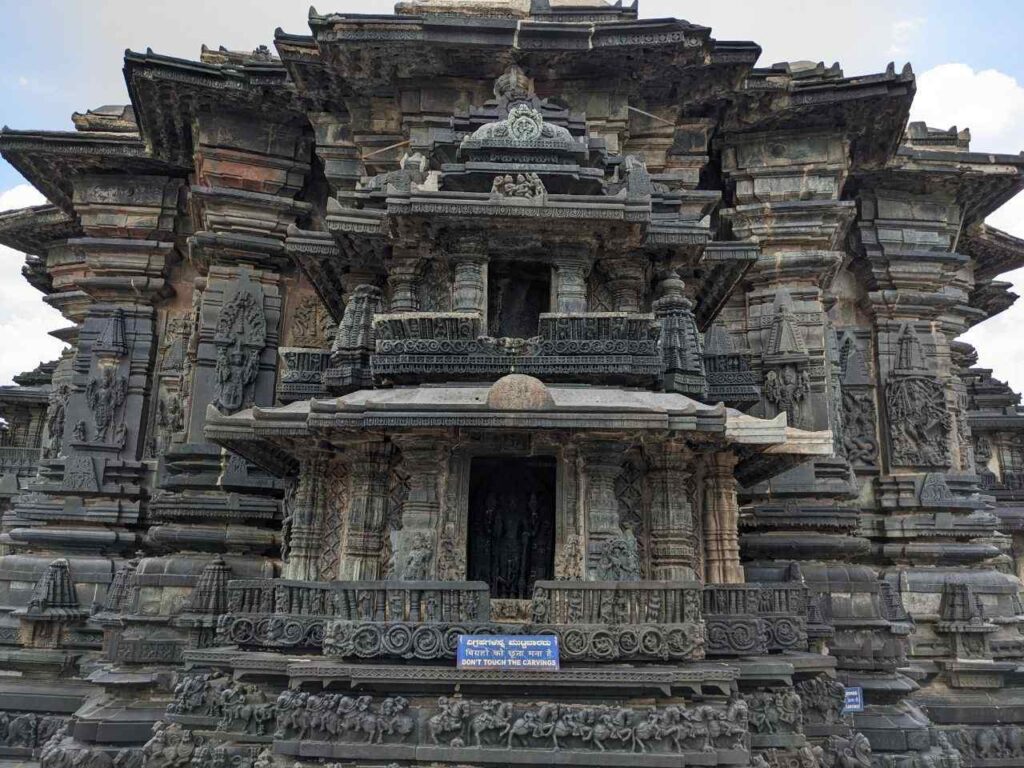
The Beluru Chennakeshava Temple is not just a place of devotion but also a living witness to ancient India’s aesthetic and architectural prowess. Visitors worldwide marvel at its grandeur, immerse themselves in its rich history, and feel the temple complex’s spiritual aura. Not just in the present days, even during the rule of Hoysalas for about three centuries, kings of other regions also admired the intricate carvings and the splendid artworks of the Hoysalas.
The Hoysalas & The Hoysala Architecture
The Hoysala period is considered as the Golden Era of art & culture. And is marked as a major period in the development of South India, with the city of Beluru serving as their capital before later moving to Halebidu (Dwarasamudra). The Hoysalas’ most notable contribution lies in their architectural marvels, which continue to mesmerize visitors to this day.
The Hoysalas, hailing from the Malenadu region of the Western Ghats, were renowned for their skills in warfare. They seized the opportunity presented by the ongoing conflicts between the Chalukyas and the Kalachuri dynasty and gradually expanded their rule across present-day Karnataka, parts of Tamil Nadu, and certain regions of Andhra Pradesh and Telangana.
History of Beluru Channakeshava Temple
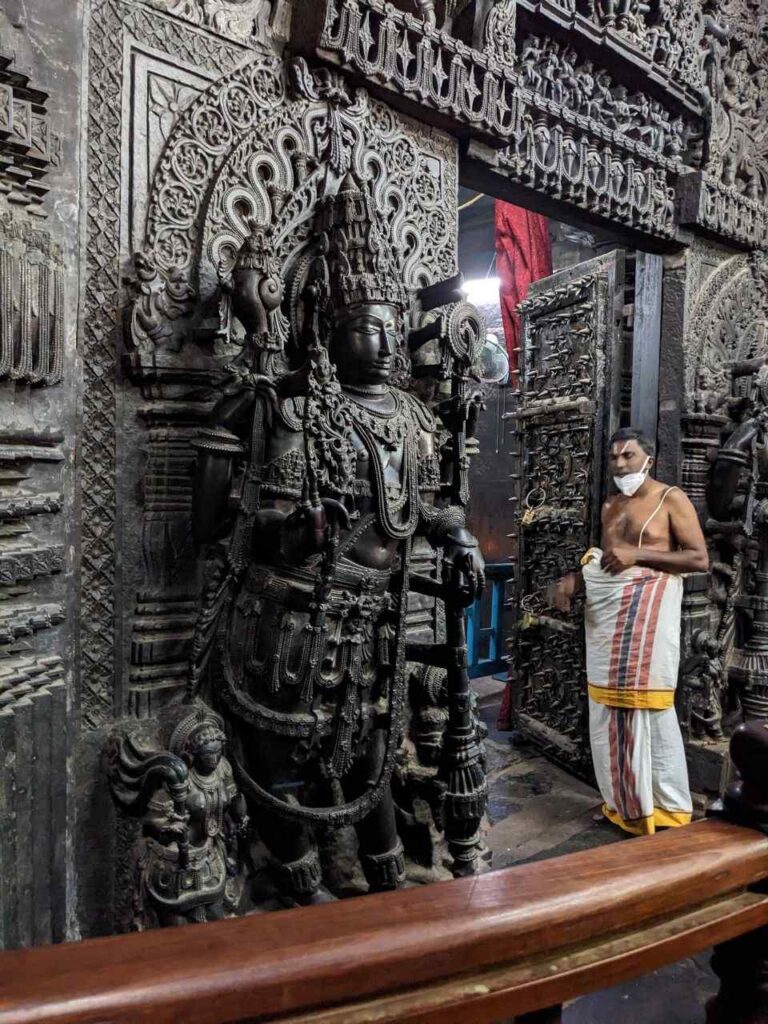
The Beluru Chennakeshava Temple was established in the 12th century, during the reign of King Vishnuvardhana of the Hoysala dynasty. The temple began in 1117 CE and was finished about 1160 CE. The Chennakesava Temple has played a vital role in the Hoysala dynasty’s history.
King Vishnuvardhana, who ordered its construction in 1117 AD, is believed to have had a strong connection to its creation with his wartime victories. The king hired the best architects and painters in the nation to produce a masterwork that would sum up the splendor of the temple complex. It was built to commemorate the Hoysala king’s victory against the Cholas in the Talakad war.
The Magnificent Layout of Chennakesava Temple, Beluru
As you step into the vast expanse of the Chennakesava Temple complex, you are greeted by a majestic rajagopura (gate) arching above you. The temple itself, situated at the heart of the complex, faces the east, following the traditional orientation of temple architecture.
To the right of the main temple, you’ll find the Kappe Channigraya temple and a smaller shrine dedicated to the goddess Sowmyanayaki, an incarnation of Lakshmi. On the left, the Ranganayaki temple stands, completing the divine ensemble.
The Architectural Splendor of Chennakesava Temple, Belur
The temple was built by the famous architect Jakanachari and his son Dankanachari, both of whom contributed significantly to the temple’s magnificent shape. Crafted meticulously from soapstone, the Chennakesava Temple showcases intricate details in the distinctive Hoysala style.
Standing tall at 37 meters, it remains one of the earliest architectural marvels of the dynasty. The outer walls of the temple are adorned with exquisite artwork, featuring elegantly posed dancing girls.
The temple experienced various hurdles throughout its construction, including invasions by foreign armies and natural calamities. However, each time the temple was destroyed, it was meticulously restored and reconstructed to retain its splendor.
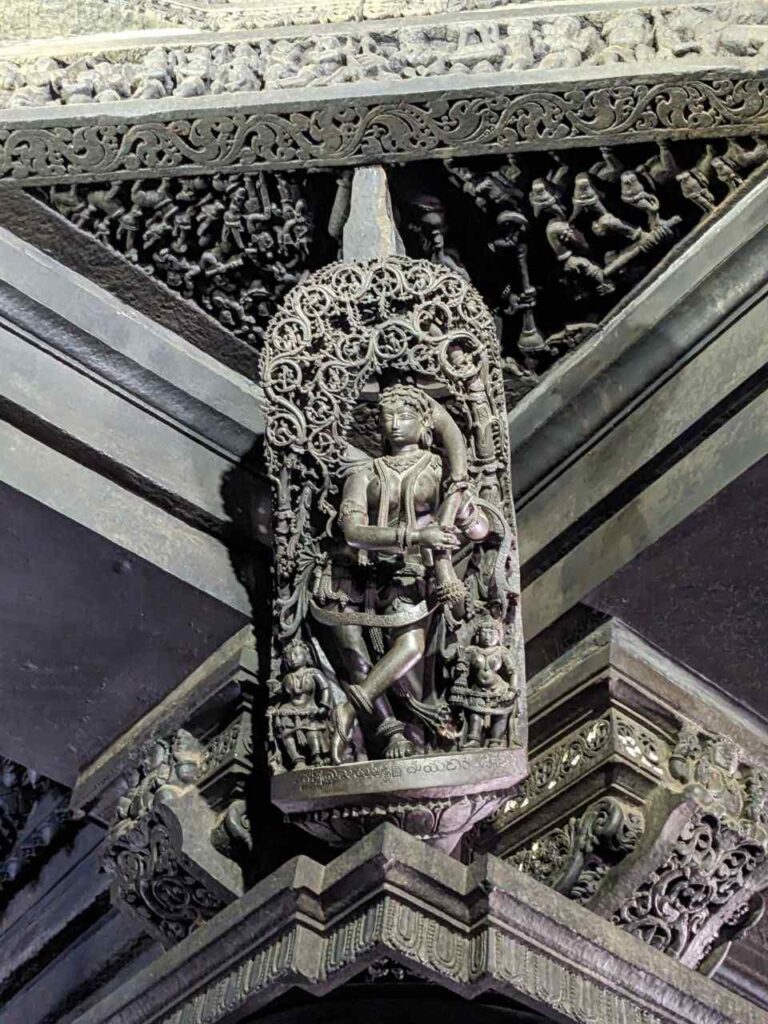
Today, the Beluru Chennakeshava Temple is a UNESCO World Heritage. The site and a famous pilgrimage and tourist site, attracting tourists worldwide to marvel at its architectural marvels and learn about the Hoysala Empire’s rich history.
The Temple Complex of Beluru Chennakeshava
The Beluru Chennakeshava Temple complex consists of more than one temple. It is flanked by several smaller shrines and constructions honoring various deities. Among the complex’s famous temples are the Kappe Chennigaraya Temple, Veera Narayana Temple, and Andal Temple.
These lesser temples, however, on a smaller size than the main temple, also include outstanding architectural elements and detailed sculptures. The temple complex is a treasure trove of architectural wonders showcasing the Hoysala dynasty’s rich past.
Architectural Marvels: Awe-Inspiring Elements
Gopuram: A Majestic Entrance
The temple entrance from the east boasts a magnificent five-storeyed Gopuram. Though the original entrance was destroyed by invaders from the Delhi Sultanate, it was later restored during the Vijayanagar Empire. The Gopuram is adorned with intricate carvings of gods and goddesses, featuring two structures resembling cow’s horns, from which it derives its name.
Star-Shaped Splendor: The Main Temple

The main temple structure is a unique star-shaped edifice elevated on a raised platform called Jagati. It consists of three primary sections: the Garbhagriha (inner sanctum), Sukanasi (vestibule), and Navranga mandapa. The original vimana or shikhara, crafted with brick, mortar, and gold-gilded copper sheets, unfortunately, had to be dismantled in the 19th century to preserve the sanctity of the inner sanctum.
Exquisite Carvings: Pillars and Brackets
The temple’s Navranga mandapa features highly polished and intricately sculpted pillars and ceilings. As you walk through this sacred space, you can’t help but be overwhelmed by the sheer beauty and artistry of these magnificent structures. Each pillar tells a story, depicting scenes from ancient scriptures, tales of valor, and divine manifestations. The attention to detail is awe-inspiring as if the very essence of devotion and passion has been chiseled into every carving.
Captivating Narrative: The Dance of Deities
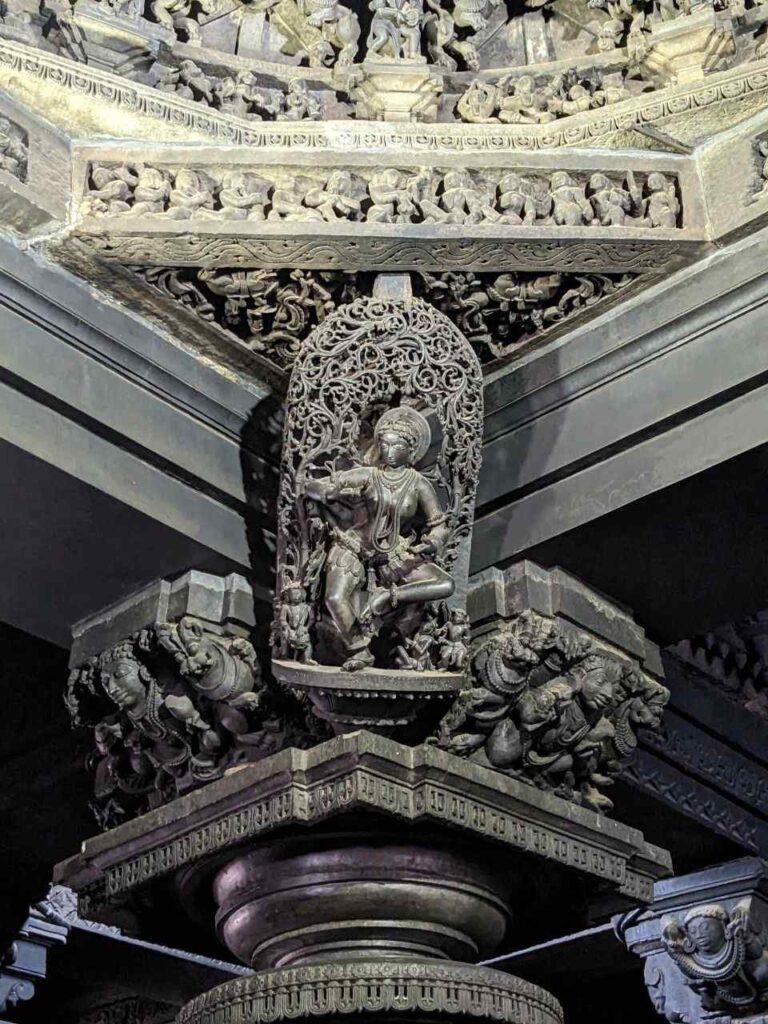
One can’t help but be captivated by the narrative unfolding on the temple walls. Intricate friezes depict celestial dancers, divine beings, and mythical creatures engaged in a mesmerizing dance of life and spirituality. The sculptures seem to come alive, their expressive faces and graceful poses evoking a range of emotions – joy, serenity, devotion, and transcendence. It’s as if the very stones have been infused with the soulful essence of devotion.
The Melody of Stone: Sculpted Music and Dance
The Chennakesava Temple is not just a visual spectacle but a symphony of stone. The pillars and brackets are adorned with intricately carved musical instruments, depicting the divine music that reverberates through the cosmos. It’s as if the very walls of the temple resonate with the melodies of ancient times, inviting you to immerse yourself in the divine rhythm. Standing amidst these masterpieces, you can almost hear the celestial orchestra playing, transporting you to a realm where art and spirituality merge.
Deepasthamba – An Anti-Gravity Pillar
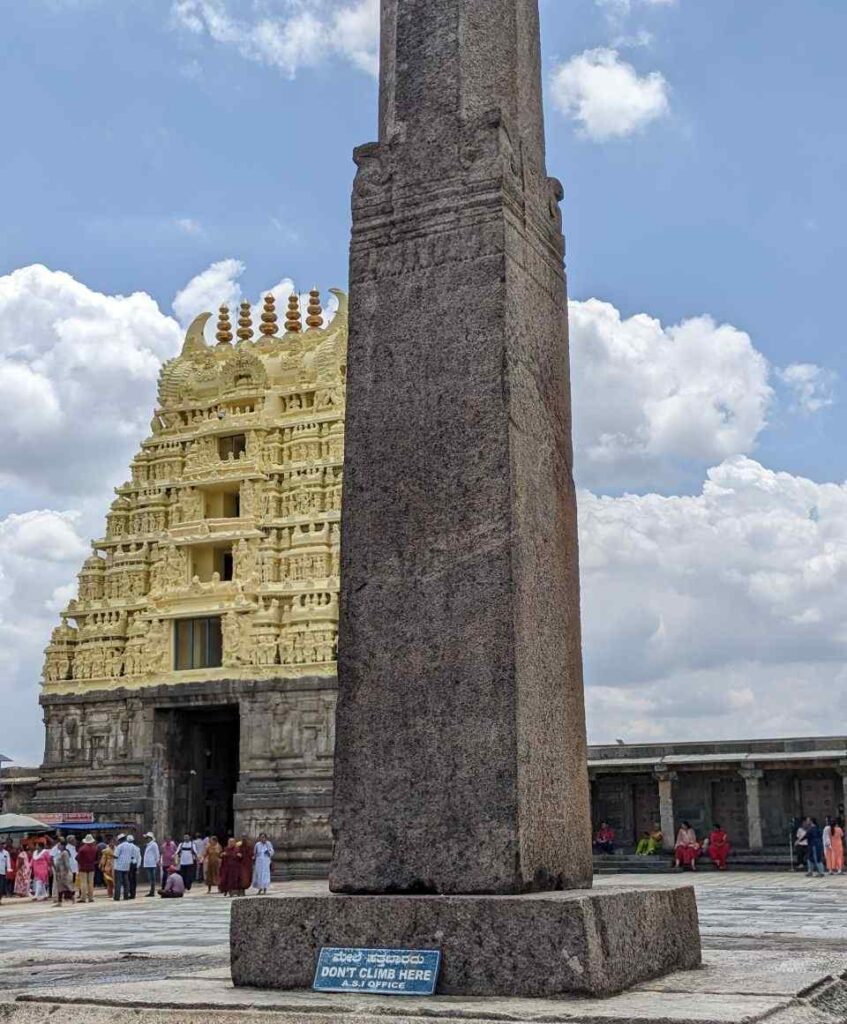
As you enter the temple complex, at the southern side of the gopuram await a surprising fact. There, a massive 42-foot-high pillar called Deepastambha waits, carved out of a single stone. It’s not an ordinary pillar; it defies gravity. Standing proudly on a raised platform without any support, this masterpiece showcases the extraordinary craftsmanship of its creators.
What makes it even more remarkable is the small gap between the platform and the pillar, caused by a slight elevation towards the north. A sheet of paper can pass through it with ease! It serves as evidence of the master craftsmen’s extraordinary skill and accuracy in creating this pillar.
According to our local guide, there used to be a staircase surrounding the pillar, providing support for lighting the lamps. Unfortunately, access to the platform and the pillar have been restricted.
Quick Facts about Chennakesava Temple, Belur
- Entry Timing: 7.00 AM to 8.00 PM
- Entry Fee: Not Applicable (Check official website for recent updates)
- Visit Duration: 2-3 Hours
- Photography: Allowed
- Best Time to Visit: November to February
- Address: Hassan District, Belur, Karnataka
A Glimpse into the Artistry of Chennakesava Temple, Belur
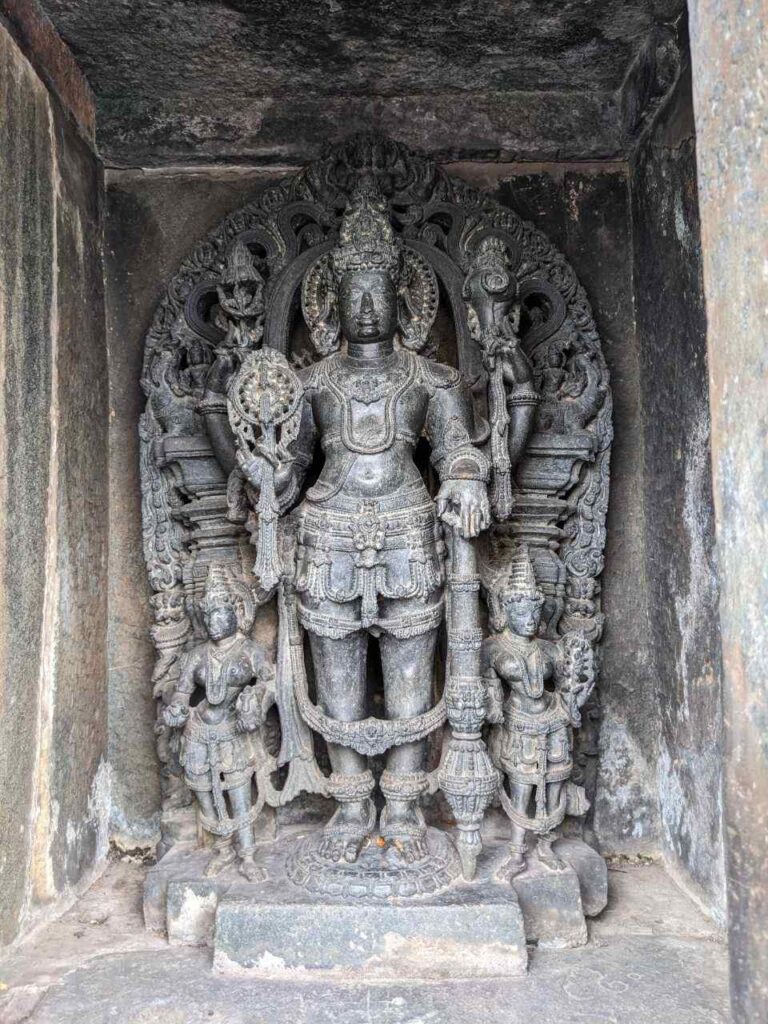
The pillars within the temple exemplify extraordinary craftsmanship and artistry. Among them, the Narasimha pillar stands as a popular attraction. With a total of 48 uniquely carved and adorned pillars, the temple exhibits unparalleled beauty. The central four pillars, meticulously handcrafted by skilled artisans, depict celestial damsels known as madanikas. These captivating sculptures portray various poses, including a lady with a parrot and a huntress.
A keen observer will find numerous depictions and references to significant events from the Mahabharata and the Ramayana on the temple’s wall sculptures. These intricately carved reliefs also feature subtle elements of eroticism, concealed within their intricate depictions. Horses, elephants, and lions are among the commonly portrayed animals in the sculptures.
The doorways of the temple’s mantapa showcase a fascinating scene of a Hoysala king triumphing over what historians believe to be a tiger or lion. Symbolically, this scene represents the victory over the Cholas, whose royal emblem features a tiger. Moreover, the sprawling temple complex houses many other important sculptures, including the Gajasurasamhara (sculpture of Lord Shiva), a depiction of Ravana, and Durga slaying Mahishasura. The presence of miniature shrines at the temple entrance adds to the site’s allure. Interestingly, the artists of that era left their signatures on these sculptures, providing us with a glimpse into the lives and culture of the Hoysala period.